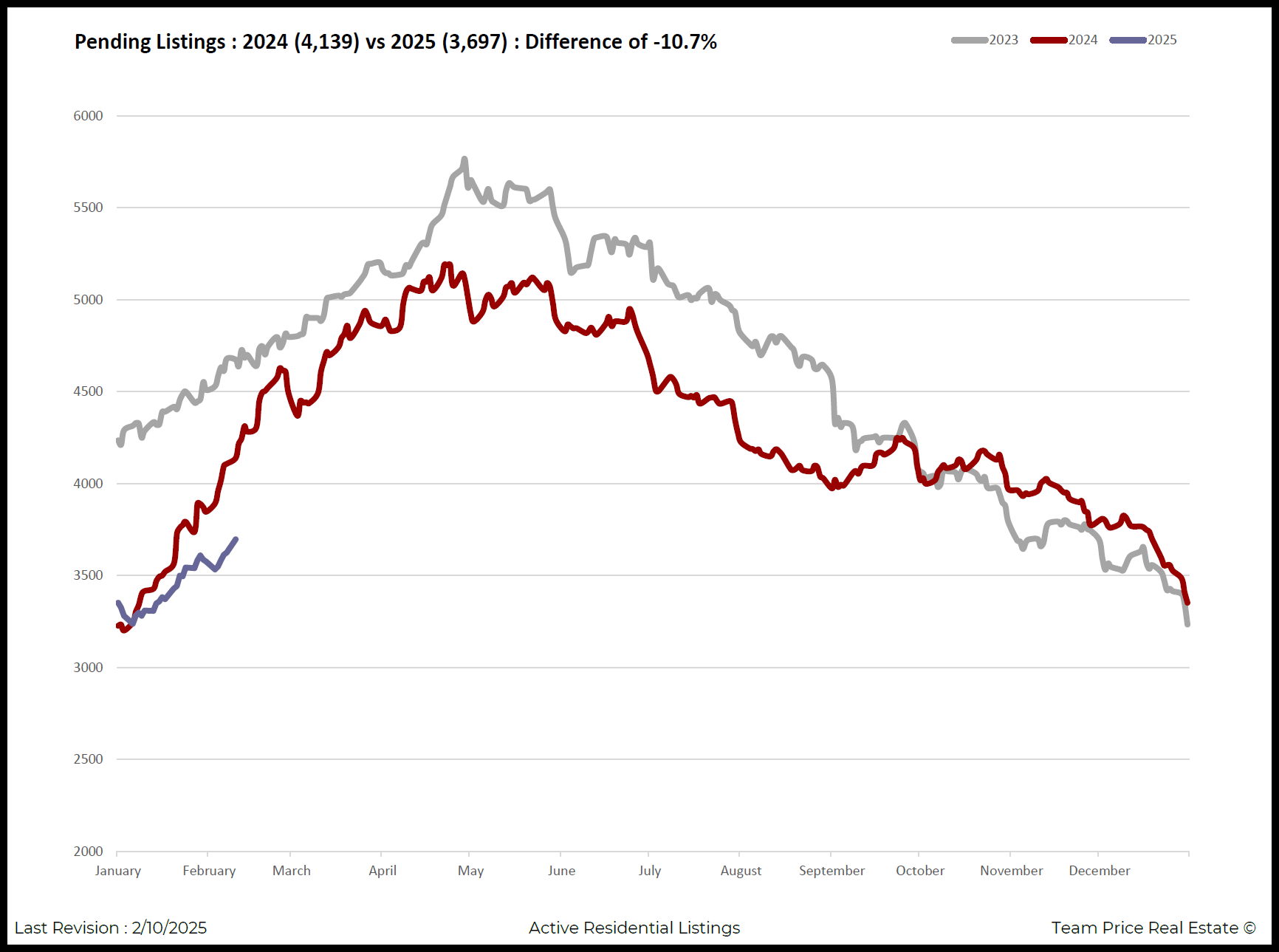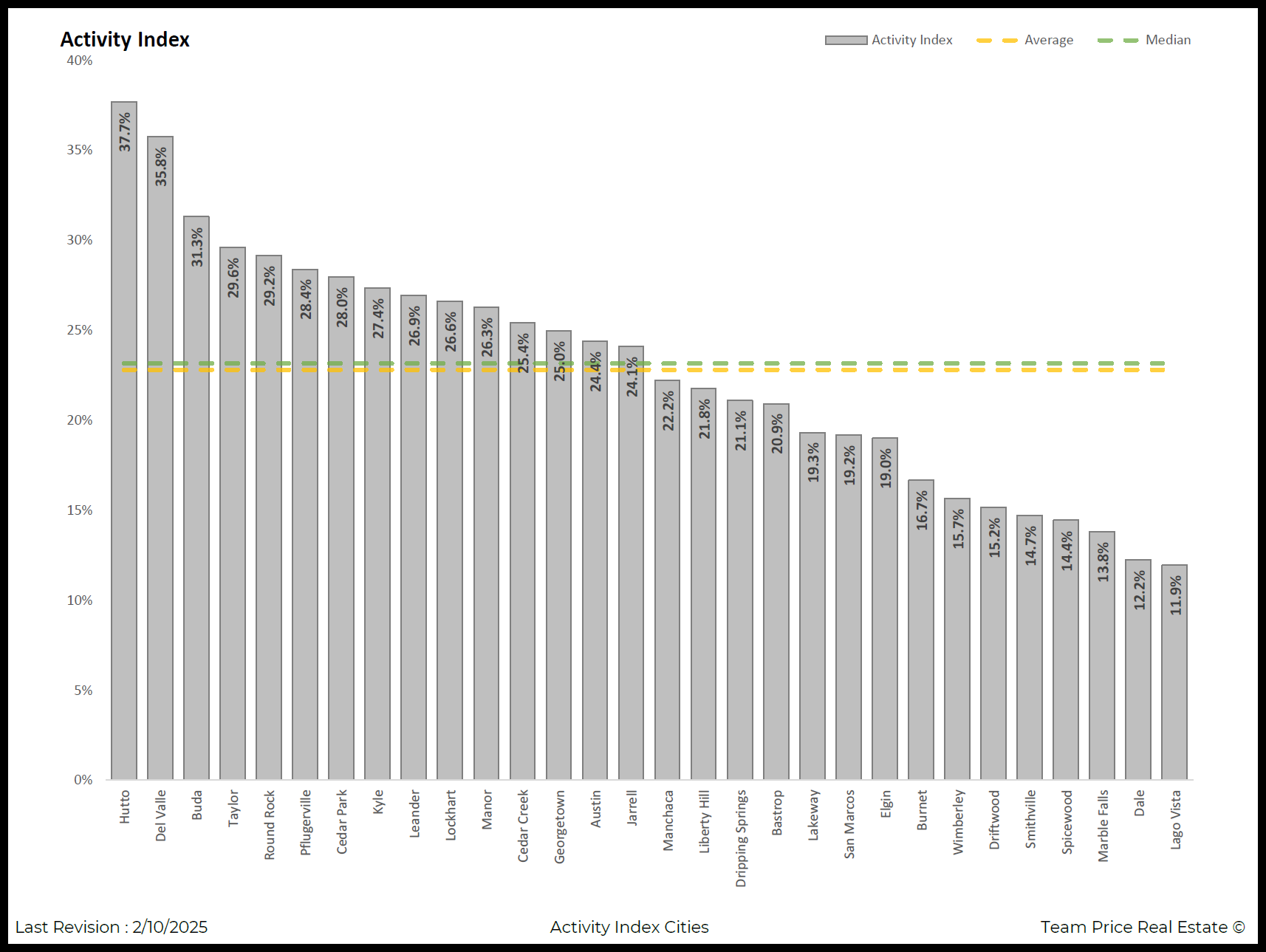Austin Real Estate Market 2025: Pending Listings Down 10.7% Across Top Cities
Published | Posted by Dan Price
Pending Listings Lagging in 2024: What the Data Tells Us About the Austin Area Real Estate Market
As we step into 2025, the Austin area real estate market is showing clear signs of shifting dynamics. A detailed analysis of pending listings and the Activity Index across the top 30 cities in the Austin area reveals important trends that both buyers and sellers should consider.
Pending listings, a key indicator of buyer demand and market activity, have seen a noticeable decline. As of February 10, 2025, the number of pending listings stands at 3,697. This reflects a significant drop of 10.7% compared to the same period in 2024, where pending listings totaled 4,139. This decline suggests a cooling in buyer activity, which can be attributed to various factors such as economic conditions, interest rates, and seasonal trends.
The Activity Index, which is calculated by dividing the number of pending properties by the total number of active and pending properties, provides further insight into the market’s health. In Austin, the Activity Index leads at 37.7%, indicating strong demand relative to other cities in the region. Bastrop follows closely with an Activity Index of 35.8%, and Buda at 31.3%. These cities show a higher proportion of properties moving from active to pending status, highlighting more competitive market conditions.
On the other hand, several cities are experiencing lower Activity Index percentages, reflecting weaker demand. For example, Marble Falls has an Activity Index of 14.4%, Smithville at 13.8%, and Taylor at 11.9%. These figures suggest that properties in these areas are taking longer to move from active to pending status, possibly due to less buyer interest or higher inventory levels.
Other notable Activity Index figures include Georgetown at 26.3%, Hutto at 25.4%, and Kyle at 24.4%. These mid-range percentages indicate balanced markets where supply and demand are relatively even. Cities like Cedar Park (28.4%) and Leander (22.2%) also fall within this balanced category, offering opportunities for both buyers and sellers to find value.
The overall decline in pending listings across the Austin area has a direct impact on the Activity Index. With fewer properties going under contract, the proportion of active listings increases, leading to lower Activity Index percentages in many cities. This trend underscores the importance of closely monitoring local market conditions, as shifts in buyer demand can influence pricing strategies and negotiation dynamics.
In conclusion, the Austin area real estate market in early 2025 reflects a mix of strong demand in certain cities and cooling activity in others. The decline in pending listings by 10.7% compared to 2024, combined with varying Activity Index figures across the top 30 cities, paints a detailed picture of a market in transition. Buyers and sellers alike should stay informed about these trends to make strategic decisions in the evolving real estate landscape.
Request Info
Have a question about this article or want to learn more?




